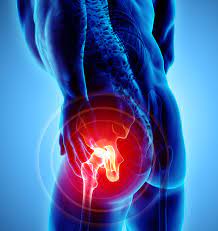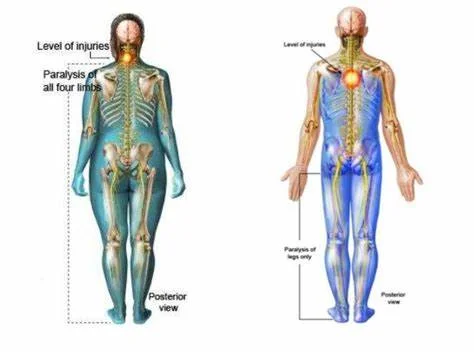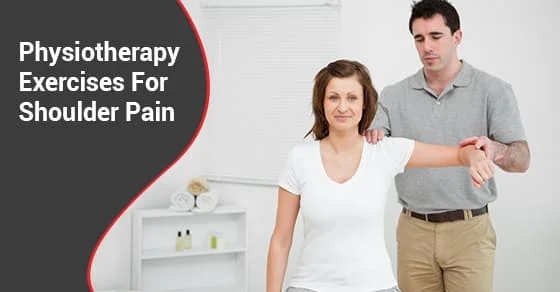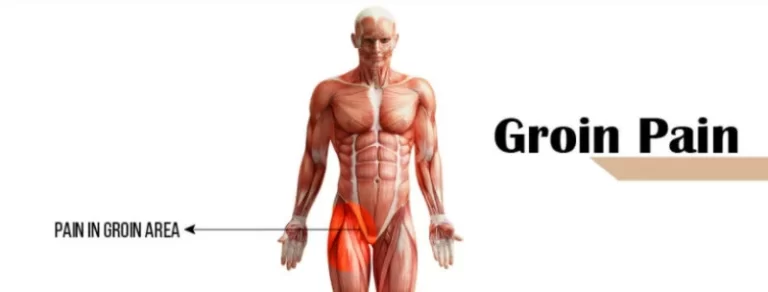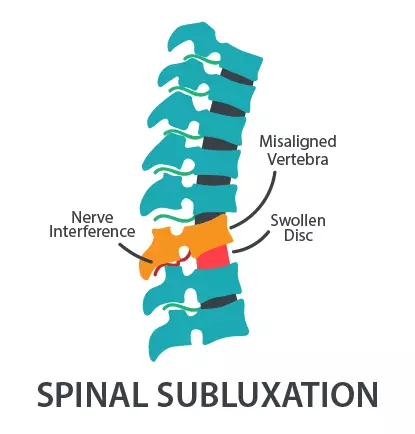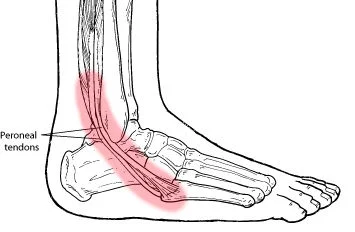Gluteus medius injury
Table of Contents
What is the gluteus medius injury?
- A gluteal medius injury is a bruise to the muscle area or a gluteal medius muscle strain, It is a overstretch or partial tear of the muscle or tendon. Trauma, either by a fall or a direct blow to the buttock area, causes gluteal injuries. Overuse injuries of the hip may cause inflammation & damage to the gluteal medius muscles that help move the hip or to the tendons that attach the gluteal medius muscles to the greater trochanter of the hip.
- Patients feel the pain in the gluteal region means buttock pain consists of the Gluteal muscle pain.
- Most commonly, the gluteal medius muscle pain is due to the local trauma from falls /direct blows.
- But other muscles, nerves & bursae in the gluteal region also produce buttock pain like Hip rotator muscles, Sciatic nerve & Ischial bursa
- Gluteus medius injury occurs mostly due to overuse of muscle pain to minor muscle strains or infections or injury, there are too many causes of pain that require proper diagnosis and treatment and are mostly relieved with rest, medical treatment, and Physiotherapy exercise.
- Most commonly pain is decreased with the RICE principle & medication.
- After that do some exercise & return to normal life.
What is the gluteus medius muscle?
- The Gluteus medius muscle is the large fan-shaped muscle that lies in the posterior hip, extending from the ilium to the proximal femur. Together with the gluteus maximus, gluteus minimus & tensor fascia lata muscles, it belongs to the muscles of the gluteal region.
- The gluteus medius muscle acts on the hip joint producing 2 movements; its anterior part internally rotates the thigh, while the contraction of the whole muscle abducts the thigh. Additionally, the gluteus medius muscle stabilizes the pelvis during standing & walking.
- The Gluteus maximus muscle covers all of the gluteal muscles except for the anterior-superior third of the Gluteus medius. This uncovered part of Gluteus medius is the safe area at which we might apply buttocks Dorso gluteal intramuscular injections.
- Nerve Supply: The gluteus medius is supplied by the superior gluteal nerve (root L4, L5 & S1). Cutaneous supply is mainly provided by L1 & L2.
- Blood supply: The blood supply to the gluteus medius muscle comes from the deep branch of the superior gluteal artery. The tendon, however, is mainly supplied by the trochanteric anastomosis. This anastomosis is formed between the ascending branch of the medial circumflex femoral artery & descending branches of the superior gluteal & inferior gluteal arteries.
What is the Function of the gluteus medius muscle?
- Gluteus medius is a prime mover of abduction at the hip joint. The anterior portion of the Gluteus medius abducts and assists in flexion & medial rotation of the hip.
- The posterior portion of the Gluteus medius abducts, and assists in the ext. & lateral rotation of the hip.
- In the hip flexion, all portions internally rotate the hip & it has been shown that at 90` of hip flexion the leverage of medial rotation of Gluteus medius is increased eight folds.
- All portions of the Gluteus medius will produce the hip abduction regrades the position of the hip.
- Gluteus medius is an extremely important muscle in maintaining the frontal plane stability of the pelvis it forms with the ipsilateral tensor fascia lata & contralateral quadratus lumborum a lateral fascial sling whose main role is the provide frontal plane stability.
- The Gluteus medius is an important muscle in walking, running & single-leg weight-bearing because it prevents the opposite side of the pelvis from dropping during walking, running & single-leg weight-bearing.
- When a limb is taken off the floor the pelvis on that side will tend to drop through loss of support from below.
- Gluteus medius function is to maintain the side of the pelvis that drops therefore allowing the other limb to swing forward for the next step.
- Gluteus medius also supports the pelvis during gait by producing rotation of the hip with assistance from gluteus minimus & tensor fascia lata. Conversely, the hip is supported during the stance phase by acting on the same side.
What are the causes of gluteal medius injury?
- I do the gluteal medius contusion is produced to bruise to the muscle area.
- Another cause is A gluteal medius muscle strain which is a do the stretch/partial tear of the muscle&tendon.
- If the occurs Trauma in this region by falling direct blow to the buttock area, causes most of the gluteal medius pain.
- Overuse injuries of the hip joint are the cause of inflammation & damage to the gluteal medius muscles.
- Falls are a common cause of a gluteal/buttock contusion.
- In patients who are anti-coagulated on the blood thinners which is a large amount of bleeding occurs within & around the muscle, causing significant pain or swelling.
- Gluteal medius muscle & tendon strains occur because of overuse injuries which occur usually with the hip joint. another cause is if the patient do Repetitive motions like squatting & lifting at work which is produce Inflammation surrounding the hip joint.
- In athletes, most of the causes are hip bursitis.
- Injuries in the gluteal region occur due to over-training, mostly with weightlifting & squats.
What is the symptom of gluteus medius injury?
- All the injuries produce Pain in the gluteal region.
- This pain is different in every cause of the intensity, duration, location & aggravating/relieving factors.
- Falls/direct blows to the buttock are produced by bleeding, inflammation & swelling.
- This condition also leads to pain & the patient feels difficult to sit on the buttocks/stand & walk normally because of the decreased ROM = range of motion of the hip joint.
- When the gluteal medius muscles are inflamed, the movement of the hip joint produces pain.
- Because bleeding is seen the deep & not immediately apparent on the surface of the skin,
- In the inflammation occur causing the buttock to feel the swollen, warm & become to slightly red.
- Tenderness is present in the area of the gluteal medius region.
- Sometimes spasms are also present in the gluteal region due to overuse activity.
What is diagnosed for gluteal medius muscle injury?
- First, the health care provider assesses the area of the pain.
Assessment
Palpation
- Find the middle of the iliac crest which is situated above the greater trochanter. Two fingers below are the bulk of gluteus medius. The contraction of the muscle can be felt by the alternate single leg-stands.

- History is the first important step which is to help health care providers for making a diagnosis.
- History includes how the injury to the gluteal region,
- This acute or chronic injury depends on the time of injury.
- Is there present any fracture & tear of the muscle.
- Is there patient can walk & present the sensation of numbness type symptoms in the leg
- In the observation part, observe the swelling in the area of pain.
- Also, observe the redness in the area of the pain.
- In the palpation part, palpate the swelling
- Check the temperature of the area of pain, it is might be warmth due to inflammation.
- Check the tenderness in the area of pain.
- On the examination part, check the ROM of the hip joint might be is reduce due to the pain.
- Also, check the strength of the muscle of the hip joint.
- X-rays help see the fractures of the hip joint, pelvis & lumbar spine.
- Ultrasound is helpful for the large collection of blood deep in the gluteal medius muscle & used to check the infection in the gluteal medius region.
Inhibition of Glutes medius:
Gluteus Medius is one of the phasic muscles that tend to be inhibited in our body by many causes :
- Standing with body weight shifted mainly on one lower limb with the pelvis swayed sideways & hip joint adducted.
- Sleeping sideline with no billow in between two lower extremities will lead to the top leg being flexed & adducted. over the other leg
- Sitting with crossed legs for a long period of time will potentially weaken the hip abductor muscles by putting the muscle in a somewhat elongated position (beyond resting physiological length).
- Tight hip adductors send a reciprocal inhibition to the Glutes medius
- When Glutes Medius is inhibited body must try to compensate by other muscles to maintain frontal plane stability & preventing the pelvis from dropping so the activity of ipsilateral tensor fascia lata & contralateral quadratus lumborum will increase causing these muscles to become tight and overactive. Quadratus lumborum & tensor fascia lata are tonic muscles that tend to be tight and overactive.
- Weakness in this muscle has been associated with lower-limb musculoskeletal pathology & gait disturbance following stroke.
- There is a relationship between a weak or dysfunctional gluteus medius & many lower extremity injuries such as Trendelenburg gait, Illio-tibial band (ITB) syndrome, and Patellofemoral pain syndrome (PFPS), Anterior cruciate ligament (ACL) & other knee injuries, ankle injuries.
- The Trendelenburg sign is that when the muscle is unable to work efficiently due to pain, poor mechanics, or weakness, the pelvis will drop to the opposite side of the weakness. A trunk compensation is often perceived with a Trendelenburg gait. Very impressive research about the validity of the Trendelenburg sign showed that the test should not be used with healthy individuals whose glutes medius has a strength of greater than 30% BW. It`s only could be used with marked weak patients. This means that you could actually have an inhibited Glutes medius & the Trendelenburg sign is negative.
Intramuscular injection
- When doing the intramuscular injection in the gluteal region, an injury of the sciatic nerve & superior gluteal nerve has to be avoided. Therefore, suggest an area of injection is the gluteus medius muscle in the upper outer quadrant of the buttock (Hochstetter’s technique).
How your lifestyle increases your risk for gluteus medius injury?
- Desk jobs, work-from-home setups, & driving routines: Prolonged sitting can weaken the glute muscles & cause them to get stiff & painful. The pain involved with these kinds of jobs usually manifests through lower back hip pain.
- Activities that promote the excessive use of hip muscles: Extensive use of hip muscles may also strain the gluteus medius. These include walking, running, or hiking.
- Weight-bearing exercises: The added weight on the upper body may contribute to the added pressure on the hip muscles & cause strain.
- Overweight and obesity One of the risk factors of being obese and overweight is the added strain on the hip joints & the muscles. If these conditions are paired with inactivity, the weak muscles may fail to support the bones & lead to osteodegenerative problems.
- Runner’s weight training complications: Runners who are skipping muscle strengthening & gluteus medius exercises often experience weak glute muscles which can lead to injuries affecting their knees & ankles.
- High-impact sports: Aside from running, sports that involve continuous running & high-impact movements like soccer & basketball may increase your risk for glute med pain due to overuse or strain on the glute muscles.
Physiotherapy Relevance of Gluteus medius muscle
- Weak gluteal medius muscles have been associated with a variety of lower limb issues. It may be lead to other muscles or tissues becoming overloaded through a cascade of events
- Patellofemoral pain syndrome
- Gluteal Tendinopathy
- Iliotibial Band Syndrome
- Trochanteric Bursitis
- Greater Trochanteric Pain Syndrome
- Differentiating Buttock Pain – Gluteal Tendinopathy
- Exercise to strengthen the muscles of the gluteus plus exercises to improve core strength results in a greater decrease in low back pain & disability than core strengthening alone.
- Patients with impaired hip abduction may present with an abnormal gait. Impaired hip abduction is commonly due to damage to the superior gluteal nerve. This may occur secondary to pelvic fractures, or space-occupying lesions & as a complication of hip surgery.
What is the treatment for gluteal medius muscle injury?
- The gluteus medius is composed of 2 segments (anterior & posterior) with 2 different roles, the anterior segment reduces the stresses on the hip anterosuperior structures & the posterior segment stabilizes the head of the femur. Atrophy in the anterior segment is associated with an increased risk of falls, aging, & total hip replacement.
RICE PRINCIPLE
In the early faces of the RICE, the principle was used to relieve the pain.
R – rest = Mostly advised resting to the patient for some time.
I – ice = Applied ice for 20 minutes on the area of pain, the patient is used to an ice pack or frozen peas of ice.
C – compression = Applied to the pillow for the compression which is used for relieving the swelling.
E – elevation – Do the elevation for the area of pain due to the applied pillow under the feet.
- Most of the muscle pain in the gluteal medius region is decreased & healed with time.
- A rubber doughnut is used to decrease the pain of the sitting position on a swollen buttock or gluteal region.
- If the patient presents with an abnormal gait pattern so the physiotherapist is taught gait training to the patient.
- In some conditions, health care provided advice on steroid injections. Using ultrasound /a long needle is used near the injury site so that the injected steroid is directed at the site of inflammation.
- Surgery is not commonly considered but surgery is needed when nonsurgical treatments are failed.
- Torn muscles also need to be repaired.
- Exercises that strengthen the anterior part: resisted hip abduction-extension exercise.
- Exercises that strengthen the Posterior part: single leg bridge, side lie abduction, the resisted hip abduction-extension exercise, and single-leg squat.
- Exercises that build low activity in both segments: side lie clam.
- Low activity was produced in the anterior segment of the single-leg bridge.
- After the initial resting & use of ice, it is important to rehabilitate the damaged muscle. Physiotherapy is vital to achieving this. If the muscle damage is very severe may be required for crutches to be used for a short period of time to reduce strain on the muscle and accelerate the healing process.
- Early rehabilitation of the muscle will involve the performing motion that involves the muscle, before moving on to some resisted movements. Later rehabilitation will involve starting activities that use the muscle such as jogging & climbing stairs, prior to progressing to running & jumping.
- The specific treatment that can be used alongside the rehabilitation
- Nonweightbearing & basic weight-bearing exercises such as clamshell exercises, side-lying hip abduction, standing hip abduction, & basic single-leg balance exercises. Progress when the patient can hold their pelvis level during a single-leg stance for 30 seconds.
- Weight-bearing exercises & gradually progresses stability exercises by (a) translating the center of gravity horizontally via stepping and/or hopping exercises; (b) reducing the width of the base of support, and (iii) increasing the height of the center of gravity by elevating the arms &/or hand-held weights, or (c) performing the exercises on unstable surfaces.
- Sport-specific movement patterns.
What is electrotherapy for gluteal muscle injury?
- In the electrotherapy applied to US – ultrasonic therapy on the tender pain for the reduce to swelling & pain.
- Applied IFT – Inferetinal therapy for the reduction of pain.
- Applied SWD – short wave diathermy to reduce the pain, and muscle spasms.
- If in the patient radicular symptoms present applied to TENS transcutaneous electrical nerve stimulation the relieve the radicular pain.
- Massage
- Stretching exercises
- Mobilisation exercises
- Education on activity & technique
Stretching for Gluteus medius muscle
- Gluteus stretch
- Lying Deep Gluteus Stretch
- Groin and long adductor muscle stretch
- Seated figure-four stretch
- Seated glute stretch
- Supine Hip Twist Stretch
- Z – Sit exercise
- Wall Glute Stretch:
- Supine Leg Extension Stretch
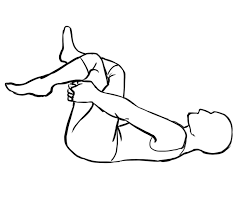
- Gluteus stretch:
- The starting position for the exercise is the supine position.
- The patient is Lying down on the back after that lift to the knee joint & cross to the right ankle joint over to the left knee joint.
- Then Grip the left thigh gently.
- Pull the hip joint in towards the chest.
- Hold this stretching position for 30 seconds.
- Then repeat this stretching on the other leg.
- Do this stretching 3 times in 1 session.
- Then do the 3 sessions per day.
- Lying Deep Gluteus Stretch:

- The starting position for the exercise is the supine position.
- the patient is lying on the back with the legs being too bent.
- then Raise to the right ankle joint & rest the right ankle on the left knee joint.
- then Using both hands lace with the fingers behind the left thigh & gently pull it toward the patient,
- and keep the head & back onto the floor.
- Hold this stretching position for 20 to 30 seconds.
- then Repeat this exercise with the other leg.
- do this stretching 3 times in 1 session.
- then do the 3 sessions per day.
- Groin and long adductor muscle stretch

- The starting position for the exercise is the sitting position.
- The patient is Sitting down on the floor with the legs spread out too far as the patient so that are straight in front of the body.
- Place the hands onto the floor in front of the body onto the floor & angle the torso toward the floor.
- Lean to the forward, leaving the elbows on the floor.
- Hold to the position for 30 seconds.
- Stop this stretch if they feel any pain.
- Do this stretching 3 times in 1 session.
- Then do the 3 sessions per day.
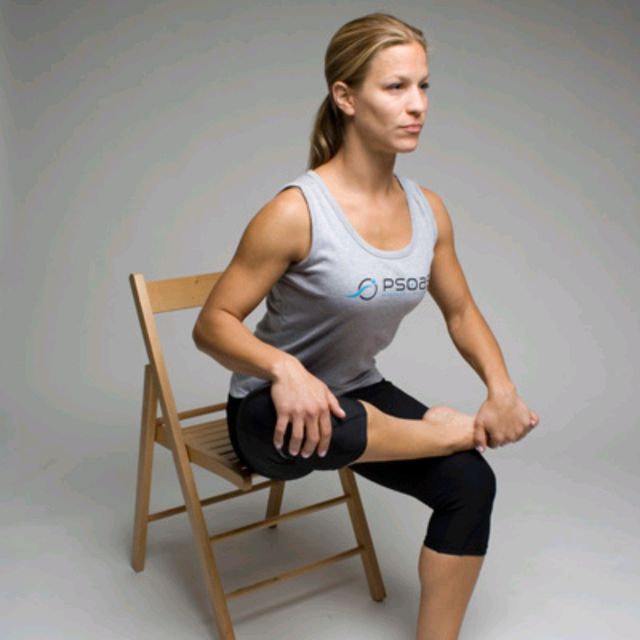
- Seated figure-four stretch:
- This is also known as the Seated Pigeon Pose.
- The starting position of the exercise is the sitting position.
- The patient is sitting upright in a sturdy chair.
- Place the right ankle on the left thigh, just above the knee joint.
- Then Place the hands on the shins.
- After that Keep the spine straight & then lean slightly forward to deepen the stretch.
- Hold for the stretching position for 30 seconds & do the 3 times in 1 session.
- Then return to the starting position of the stretching.
- After that Repeat with the other leg.
- This stretching is also done in sitting on the floor & standing position.

- Seated glute stretch:
- The starting position of the exercise is the sitting position.
- Sit on the floor & extend your legs in front of you.
- Keeping the back straight, lift the left leg.
- Place the left ankle joint on the right knee joint.
- Then Lean-to slightly forward &feel the patient deepen the stretch.
- Hold this stretching position for 30 seconds & do the 3 times in 1 session.
- Repeat this stretching on the other side.
- Do the 3 times in 1 session.
- Z – Sit exercise

- Start by sitting comfortably on the ground.
- Bring the left knee to a 90-degree position in front of the body (as much as your body allows).
- Do the same with your right leg, toward the back of your body.
- You can sit upright in this pose or lean the torso forward toward your front leg.
- Hold the pose for 30 seconds, & then repeat on the other side.
- Supine Hip Twist Stretch

- This exercise stretches the outer hip, where the gluteus minimus muscle is located, without placing stress on your spine. Lie on the floor on the back with arms out to your sides & with your hands on the floor. Put the feet flat on the floor about hip-width apart. Cross left foot over right thigh near your knee. Exhale & turn your pelvis toward your right so that your outer right knee & your left foot move toward the floor. Do not lift your left shoulder off the ground or twist your upper back. Hold this stretch for 5 to 6 deep breaths. Perform 2 sets of stretches on each side of the body.
- Wall Glute Stretch:

- This exercise stretches the entire hip region, which also takes the pressure off the sciatic nerves, which run through either side of the buttocks. Lie on the ground on your back, & put your feet on the wall about hip-width apart. Cross the left foot on your right thigh near the knee. Do not change the position of your pelvis as you cross your foot. Push your left knee toward the wall by using your hip. Hold this stretch for 5 to 6 deep breaths. Switch leg position, & repeat the stretch on the opposite hip.
- Supine Leg Extension Stretch
- This exercise stretches the entire back of your hip & leg from your buttocks & into your calves. Lie on the ground on your back, & lift your left knee to your ribs. Grab the back of your knee, & point your knee so that it faces toward your right shoulder or the right side of your chin. Slowly extend your leg straight up, & flex your left foot toward your right shoulder. Hold the stretch for 5 to 6 deep breaths. Repeat the stretch on the opposite leg.
Strengthening exercise of the gluteus muscle
- Buttocks
- Knee to the opposite shoulder
- Side Leg Raises
- Prone Straight Leg Raises [ hip extension ]
- Glute bridge with band
- Seated hip abduction with resistance band
- Spiky ball roll on glutes
- Bridges
- Knee to Chest
- Downward-Facing Dog
- Pigeon Pose
- Clamshell exercise
- Leg bridge exercise
- Buttocks:

- The starting position for the exercise is supine.
- Patient Lay on to the back.
- Then bring the affected leg up to the right angle.
- Grasping the with the help of both hands behind the thigh.
- Then locking to the fingers of the head.
- Do the take unaffected leg & place to the ankle joint against to the knee joint.
- This exercise Repeat to the opposite sides.
- Do this exercise 3 times in 1 session.
- Then do the 3 sessions per day.
2. Knee to the opposite shoulder:

- The starting position for the exercise is the supine position.
- The patient is lying on the back with both legs extended & feet flexed upward.
- Then Bend to the right leg & clasp both hands around the knee joint.
- After that Gently pull the leg across the body toward the left shoulder.
- Hold this exercise position for 30 seconds.
- Push the knee joint so that the leg is returned to the starting position.
- Do this exercise 3 times in 1 session.
- Then do this exercise 3 sessions per day.

- SIDE Leg Raises (hip abduction) exercise
- The starting position for the exercise is the side-lying position.
- The patient is lying on one side with the legs stacked.
- The patient is bent to the bottom leg for support.
- Then Straighten to the top of the leg and maybe upraise to 45 degrees.
- Hold this exercise position for 10 seconds & then relax.
- Then Repeat this exercise 10 times in the 1 session.
- Do this exercise in 3 sessions per day.
- Women doing Side Leg Raise Exercise lie in 2 Step on the blue mat. Illustration about Thighs Workout.
- Prone Straight Leg Raises (hip extension) exercise :

- The starting position for the exercise is the prone position.
- The patient Lie to flat on their stomach.
- Must be Keep the legs straight.
- Then Tighten to the muscles in the bottom & then the hamstring muscle of the one leg.
- One leg is lifted toward the ceiling.
- Hold this exercise position for 10 seconds.
- Repeat this exercise 10-15 times in 1 session.
- Do this exercise in 3 sessions per day.

- Glute bridge with the band:
- The starting position for the exercise is the supine position.
- Place a small & tight resistance band around the calves.
- The patient is lying on their back & lifting their hips.
- Must be Keep tension in the band & tap the hip joint down to the floor before raising the hip back up again.
- This is important to keep the spine straight & do the movement from the hip joint.
- Repeat this exercise 10 times in 1 session.
- Do this exercise in 3 sessions per day.

- Seated hip abduction with resistance band:
- Starting position is the sitting position.
- The patient is Sitting on the floor & placing the resistance band around the calves.
- Bend the knee joint & keep your feet on the floor.
- Then Place the hands slightly behind the patient.
- Must be Keep the back straight back & press the legs out to the sides as they externally rotate the hip joint.
- Then Gently & with the control, bring the legs back together.
- Repeat this exercise 10 times in 1 session.
- Do this exercise in 3 sessions per day.
- Spiky ball roll on glutes

- The starting position for the exercise is the supine position.
- Use the spiky ball to roll out the tight muscles into the buttock.
- Then Roll the ball around to the fleshy part of the buttock for 30 seconds 1 time.
- Do this exercise 10 times in 1 session.
- Perform this exercise in 3 sessions per day.

- Bridges :
- The starting position of the patient is in the supine position.
- The patient is lying on the back with the knees bent.
- Then patient feet are touching the floor.
- After that Raise the hips toward the ceiling.
- Must be kept back into the straight line with the knees joint & shoulders joint.
- Hold this exercise position for 10 seconds.
- Do this exercise 10 times in 1 session.
- Perform this exercise 3 sessions per day.

- Knee to Chest :
- Starting position is supine.
- Lie onto the back.
- Starting with the left or right knee.
- Use the hands to gently pull by to the bent knee toward the chest.
- Hold for 10 seconds.
- Repeat this knee-to-chest exercise with to the opposite knee.
- Repeat this exercise 10 times per session & 3 sessions per day.
10 Downward-Facing Dog :
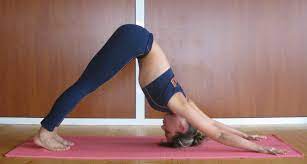
- Start this exercise with the hands & knees.
- Then press into the hands as far as to the lift of the hip joint toward the ceiling.
- Drop to the head down to the bring the ears into the line with the upper arms & chin all to the way into the toward the chest.
- Bend to the knee joint for the tilt of the pelvis slightly the forward.
- Then move to the body through to any variations of to the feel for to the appropriate.
- Hold this yoga pose for up to 1 minute.
- do this yoga pose 3 times a day.

11 Pigeon Pose:
- Starting with the all fours limb.
- Move the right knee joint toward to right wrist then place the shin on the floor.
- Then Move to the right ankle toward to left wrist.
- Slide the left leg back, point the toes & keep the hip joint facing forward.
- Then Extend the spine.
- Gently walk the hands forward.
- Hold this position for 5–10 breaths.
- Then return to the starting position.
- Switch the legs & repeat.
- Do this yoga the 3 times per day.
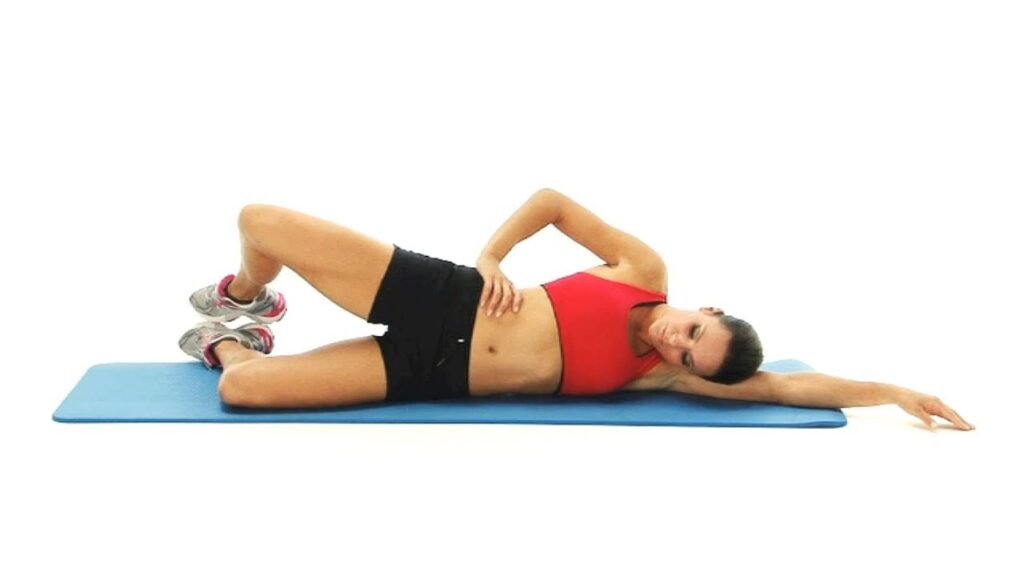
- Clamshell exercise
- Lie on your side, with legs stacked & knees bent at a 45-degree angle.
- Rest your head on your lower arm, & use your top arm to steady your frame. …
- Engage your abdomen by pulling your belly button in, as this will help to stabilize your spine & pelvis.
- Leg bridge exercise:
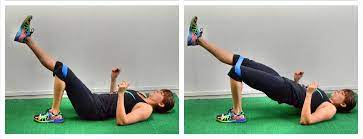
- Tighten your abdominal & buttock muscles.
- Raise the hips up to create a straight line from your knees to shoulders.
- Squeeze your core & try to pull your belly button back toward your spine.
- Slowly raise & extend one leg while keeping your pelvis raised & level.
- Hold.
- Return to the starting position with the knees bent.
- Perform the lift with the other leg.
- Standing side bend exercise

- Using a wall for balance, stand with one side of the body to a wall.
- Cross the leg farthest from the wall in front of the other.
- Place one hand on the wall & the other on the hip. Then lean your upper body away from the wall, & push your hip toward the wall.
- Hold for 20 to 30 seconds, then repeat on the other side
15. Weighted deadliftStanding side bend exercise

- Stand with your feet parallel & hip-width apart. If you feel comfortable, hold light dumbbells.
- Keep your spine long & your gaze forward. Your shoulders should be back & down.
- Squeeze the glutes as you fold from the hips, bending the knees so that your seat reaches back past the heels. Resist the urge to round the spine in order to “give in to the weight.”
- Allow your glutes & belly to control the descent & ascent.
monster-walks
Isometric Single-leg Wall Lean: Standing parallel to the wall, flex the hip closest to the wall to 90 degrees, with the knee bent. Press the foot of the stance leg into the ground while driving the bent leg into the wall. The gluteus medius muscle of the standing leg will fire to stabilize the pelvis.
Lateral Band Walks: Place a Versa Loop band around the ankles, shins, or directly above or below the knees & assume a quarter-squat position. Do not change the position of the squat while stepping laterally, keeping tension on the band throughout.
Banded Triplanar Toe Taps: Place a Versa Loop band directly above the knees & shift into a single-leg, quarter-squat position. While balancing on the standing leg, tap the alternate leg forward, to the side & directly behind. The core & hip muscles will fire to maintain single-leg balance against the band’s resistance in 3 different directions. This exercise works the gluteus medius of both the moving leg & the stabilizing leg, as they fire to maintain single-leg balance against the band’s resistance in 3 different directions.

Self-Myofascial Release
- This is a self-massage technique that breaks apart muscle & tissue adhesion that causes sensitivity, pain & stiffness. Use a foam roller to massage your gluteal complex near your outer hip & the head of the femur. Put the foam roller on the floor, & sit on top of it with both feet flat on the floor. Cross your left foot over your right thigh, & put your left hand behind you near the roller. Your weight should shift toward your left hip.
What is the prognosis & recovery time for gluteal medius muscle injury?
- Most traumatic gluteus injuries which are the cause of the pain resolve on their own with time & conservative therapy, but it depends on the type of injury which is measured in the weeks, not in days.
- Overuse injuries of the gluteal region take to a longer time to heal, but the goal of the treatment of gluteus muscle pain is to return the patients to their normal level of function.
Is it possible to prevent gluteal medius muscle injury?
- Yes, it is possible to prevent gluteal medius muscle injury.
- For the prevention, People must be avoided accidental falls.
- So that must be worn to important good footwear.
- The elderly patients must be taken of the balance issue.
- Warming up & cool down, then stretching before any activities which are helping to decrease the injury risk.

